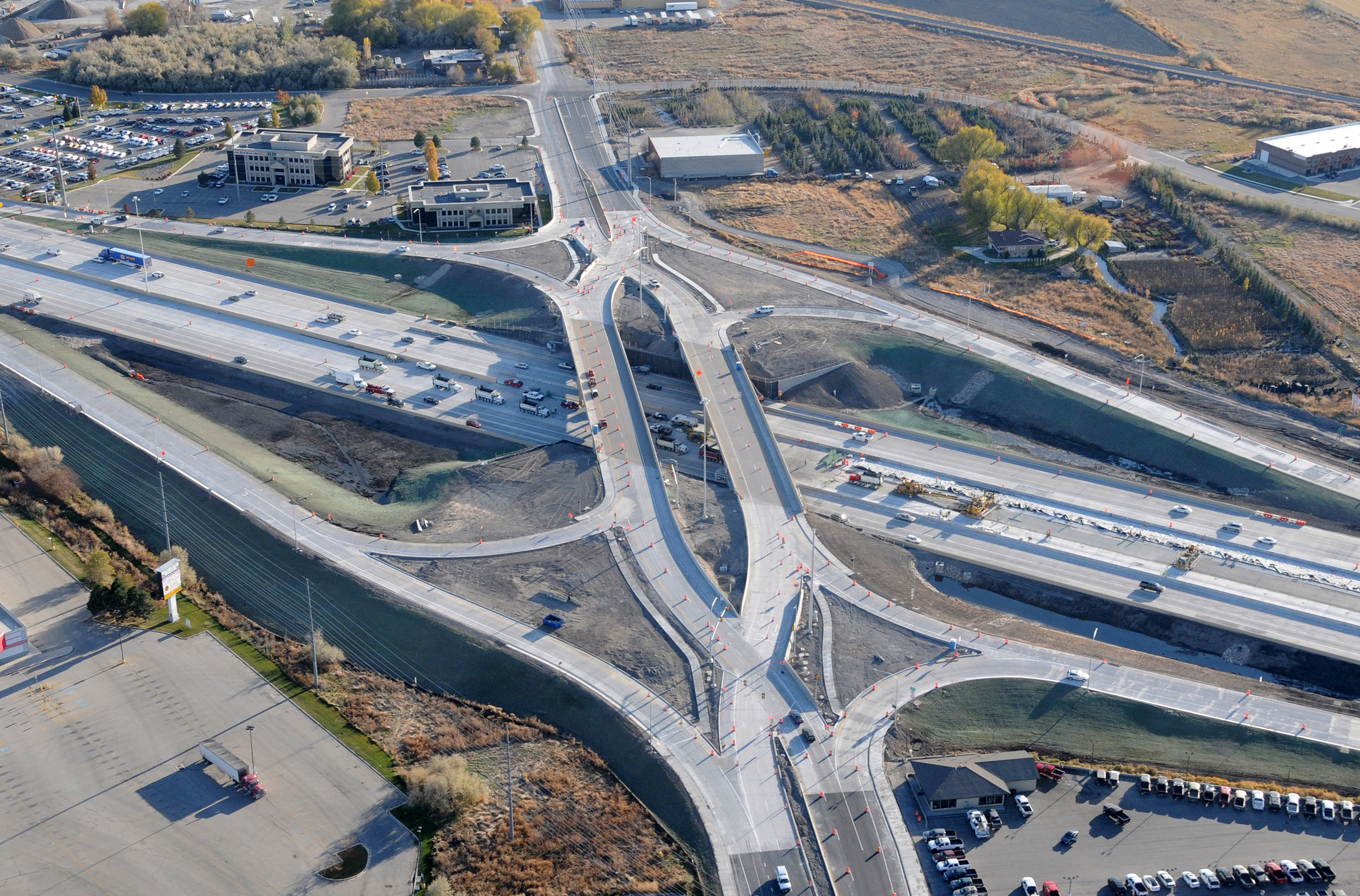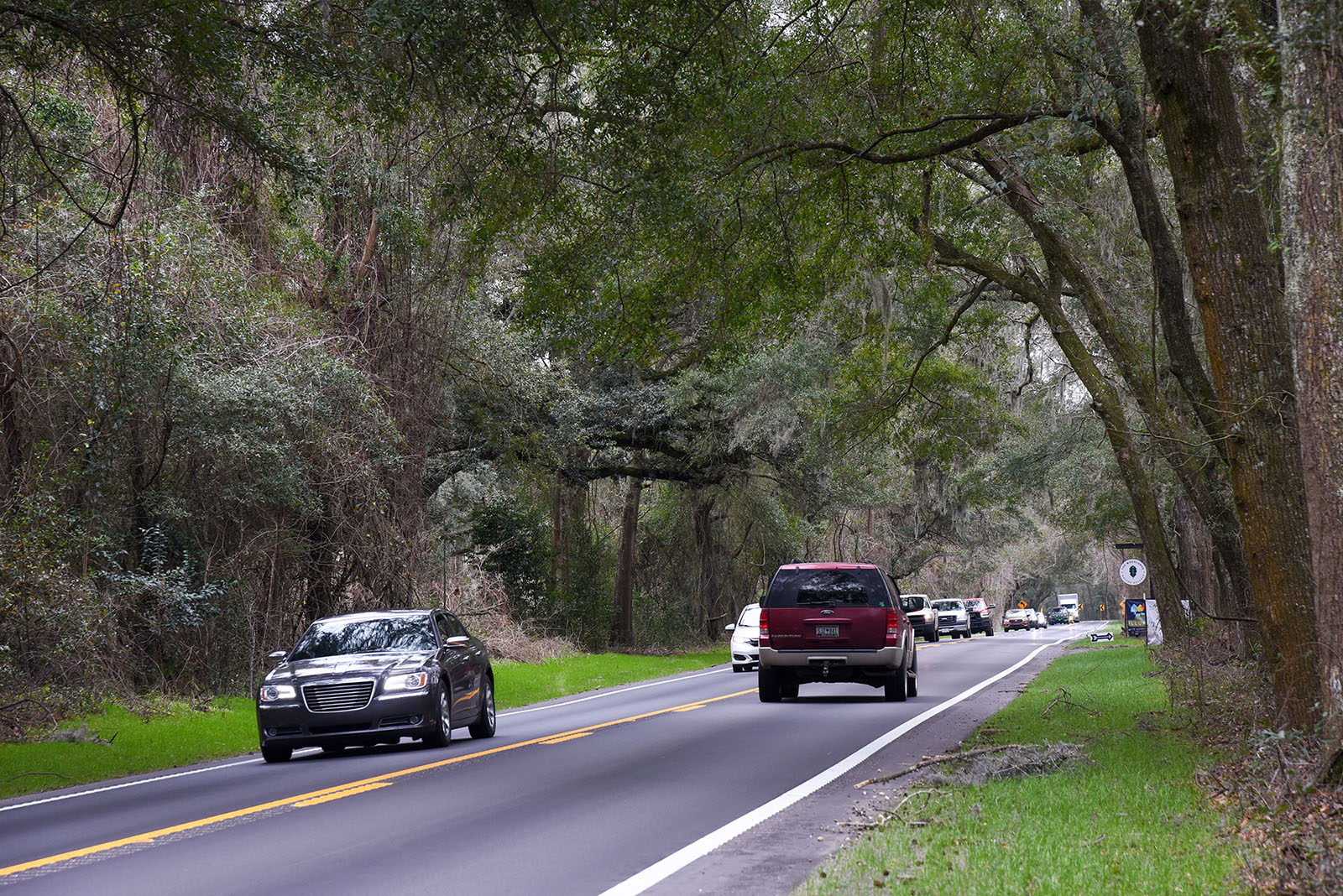
Award-Winning Projects Employ EDC Innovations
The 2021 America’s Transportation Awards featured several projects delivered with innovations that have been a part of Every Day Counts, such as diverging diamond interchanges, data-driven safety analysis, design-build, ultra-high performance concrete, targeted pavement overlays, unmanned aerial systems, and community connections.
The awards, sponsored by the American Association of State Highway and Transportation Officials (AASHTO), AAA, and U.S. Chamber of Commerce, recognized State department of transportation (DOT) projects in the categories of operations excellence, best use of technology and innovation, and quality of life/community development. Read more about the following projects and the rest of this year’s winners on the America’s Transportation Awards website.
Operations Excellence
The Kansas DOT (KDOT) Turner Diagonal Interchange reconfiguration project addressed an interchange originally built in the 1960s to accommodate tollbooths. Because the tollbooths were never installed, this left a 3-mile corridor with obsolete ramps and cut off access to development of nearby land. KDOT worked with its Kansas City partners to construct a diverging diamond interchange to improve safety, increase development and job opportunities, provide access to public transit, reduce maintenance costs, and reduce congestion. The project was delivered using the design-build contracting method, which KDOT said reduced the delivery schedule by 20 months.

The South Carolina DOT used predictive analysis to improve safety while preserving aesthetics along one of the State’s scenic byways.
Credit: South Carolina Department of TransportationThe South Carolina DOT (SCDOT) used Rural Road Safety Program strategies on the SC Road 61 project. Local officials and the public wanted to preserve the aesthetics of the corridor, which is a designated scenic byway, and generally did not favor removing trees and other vegetation as would be needed for some roadway departure countermeasures. SCDOT applied predictive analysis using Part C of the AASHTO Highway Safety Manual to determine the impacts and crash reduction trade-offs associated with various alternatives, then developed a context-sensitive solution with minor landscape alterations for repaving the road’s shoulders and adding rumble strips. Read an FHWA case study to learn more about SCDOT’s data-driven approach.
Technology and Innovation
The California DOT (Caltrans) U.S. Highway 50 Echo Summit Sidehill Viaduct replacement project included several challenges, especially its location on a rugged mountainside near Lake Tahoe that did not have enough space to stage half of the work at a time. Caltrans’ solution was an accelerated bridge construction approach that involved building around and behind the existing foundation and connecting prefabricated concrete beams with ultra-high performance concrete, enabling the project to be completed in one construction season.
The California DOT used ultra-high performance concrete connections to help accelerate replacement of the Echo Summit Sidehill Viaduct near Lake Tahoe.
Credit: California DOTThe New Mexico DOT used a continuously reinforced concrete pavement overlay instead of a full reconstruction for the NM 136 Pete Domenici International Highway project. The pavement on this 9-mile highway corridor had reached the end of its useful life and was seeing increasing truck volume. NM 136 begins in the United States at the international border with Mexico at the Santa Teresa Port of Entry. Truck-traffic volume from Mexico is high, and permissible weights exceed otherwise enforceable U.S. limitations. A targeted overlay provided a long-term solution that the agency reported saved more than $20 million in reconstruction costs.
The Ohio DOT’s Unmanned Aerial Systems (UAS) Center monitors traffic signals, traffic flow, construction progress, and more. The UAS flights increase safety by reducing the number of DOT staff working alongside traffic. The UAS Center also reduces the number of staff needed to perform inspections, saving time and money. Ohio DOT is sharing the technology with other agencies in the State to streamline communications and increase collaboration.
The Ohio DOT’s UAS Center uses unmanned aerial systems to increase safety and efficiency in maintaining the State’s roadways.
Credit: Ohio DOTThe Illinois DOT employed UAS for its I-255 Metro East project. UAS were used along with traffic counters, cameras, staff, and traffic reporting services to monitor and evaluate travel times, problem spots, and traffic volumes during the I-255 rehabilitation. This information aided the agency in providing feedback to the public regarding underused alternate routes, helping to keep traffic flowing.
Quality of Life/Community Development
The Georgia DOT (GDOT) Macon-Bibb County Bridges project upgraded two bridges, one built in 1976 and one historic structure more than 125 years old, that serve as key connectors to ports for rail freight. The design-build approach allowed for faster construction while providing connections to retail establishments and a nearby university. GDOT reported that using design-build helped in completing the project ahead of schedule and increasing safety. The agency also worked with the community and local historians to preserve bricks from the historic bridge for a monument at a nearby park.
The Texas DOT (TxDOT) U.S. 175/S.M. Wright Freeway phase 1 project reconfigured an elevated highway that divided a neighborhood south of downtown Dallas and had several safety concerns. TxDOT converted that section of the freeway into a six-lane boulevard to improve safety, mobility, and the environment. The project reduced traffic volume from 107,000 vehicles per day to about 40,000. TxDOT said the project aims to keep drivers safer and reconnect a community long separated by the highway.
—MORE INFORMATION
Contact Kaitlyn Meuser or Maggie Kasperski of AASHTO for information on America’s Transportation Awards.
Recommended Citation: U.S. Department of Transportation, Federal Highway Administration - Washington, DC (2021) Innovator Newsletter, November/December 2021, Volume 15 (87). https://doi.org/10.21949/1521365



